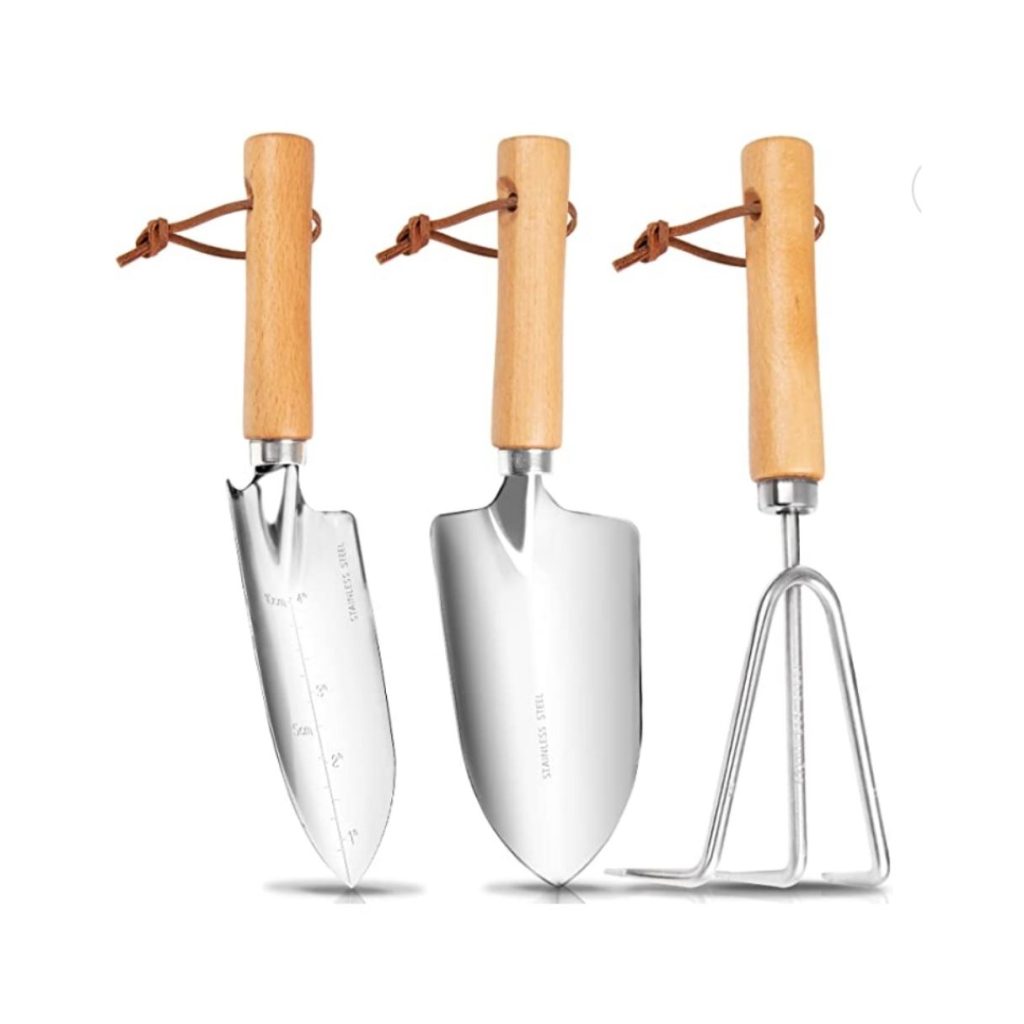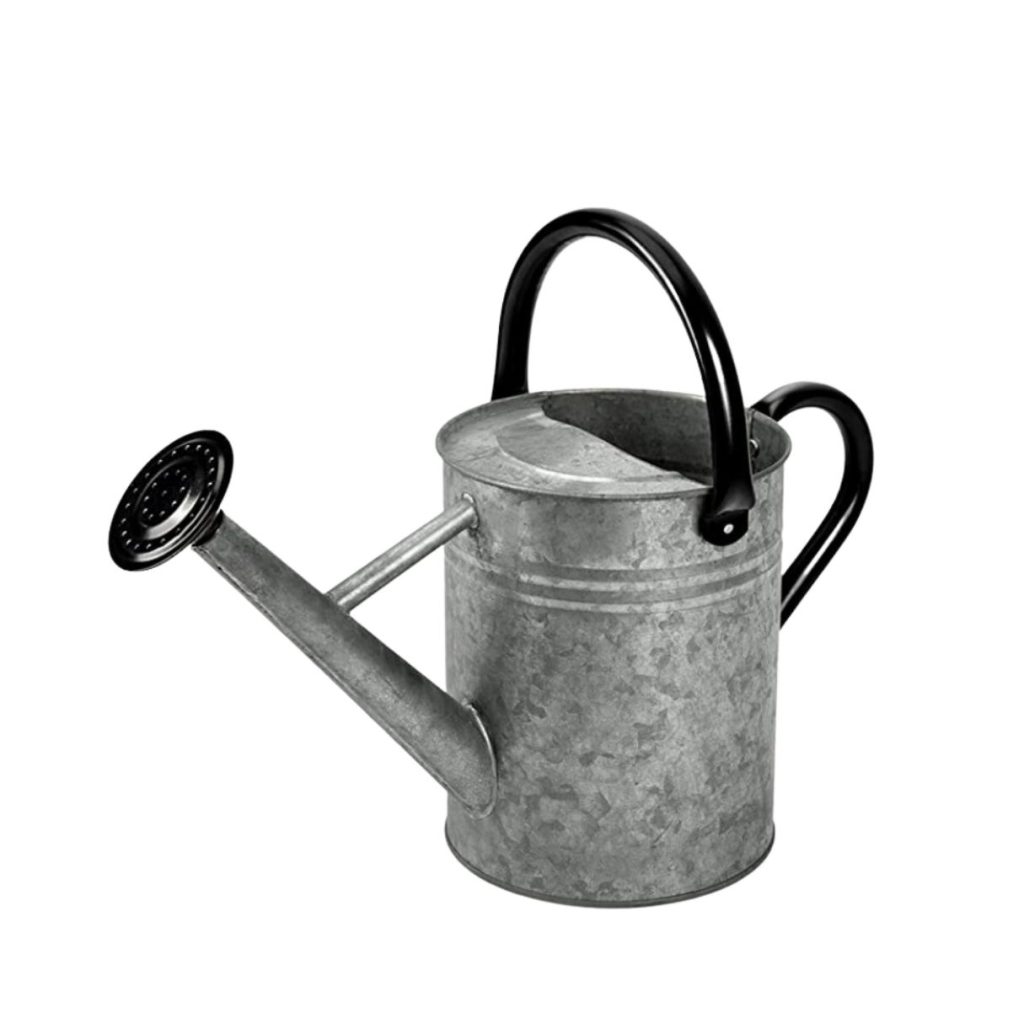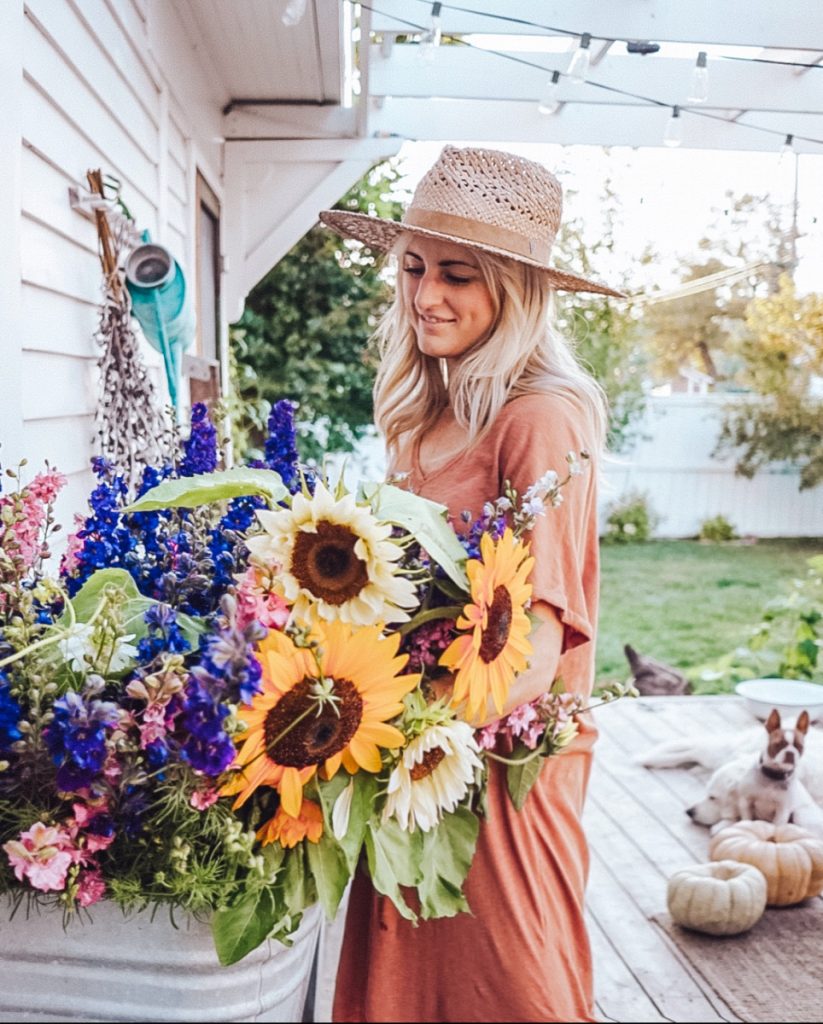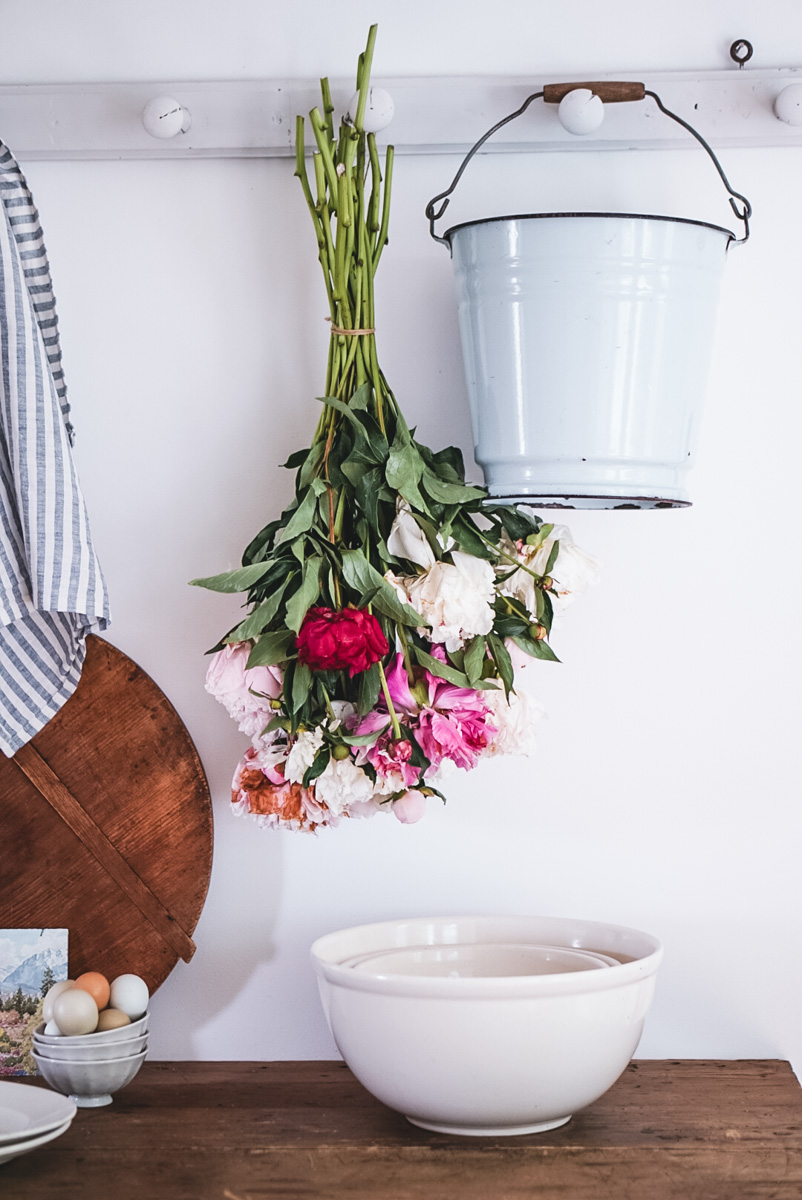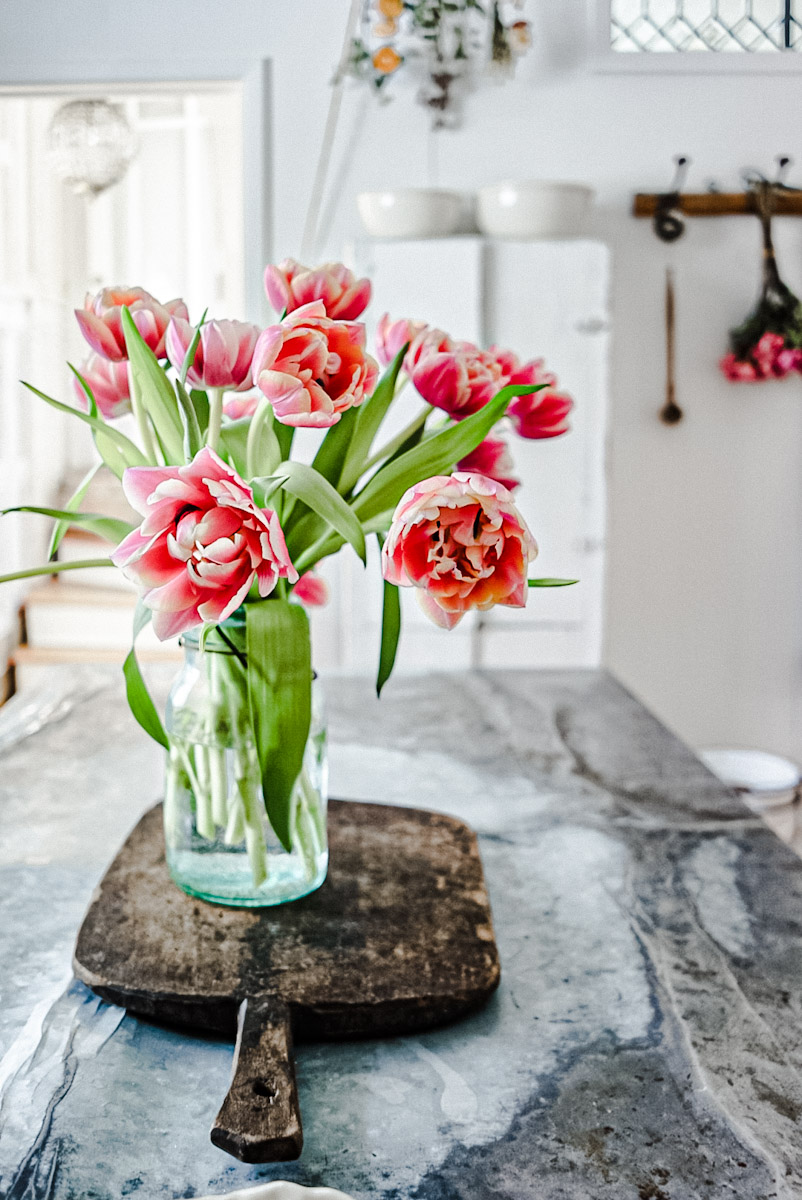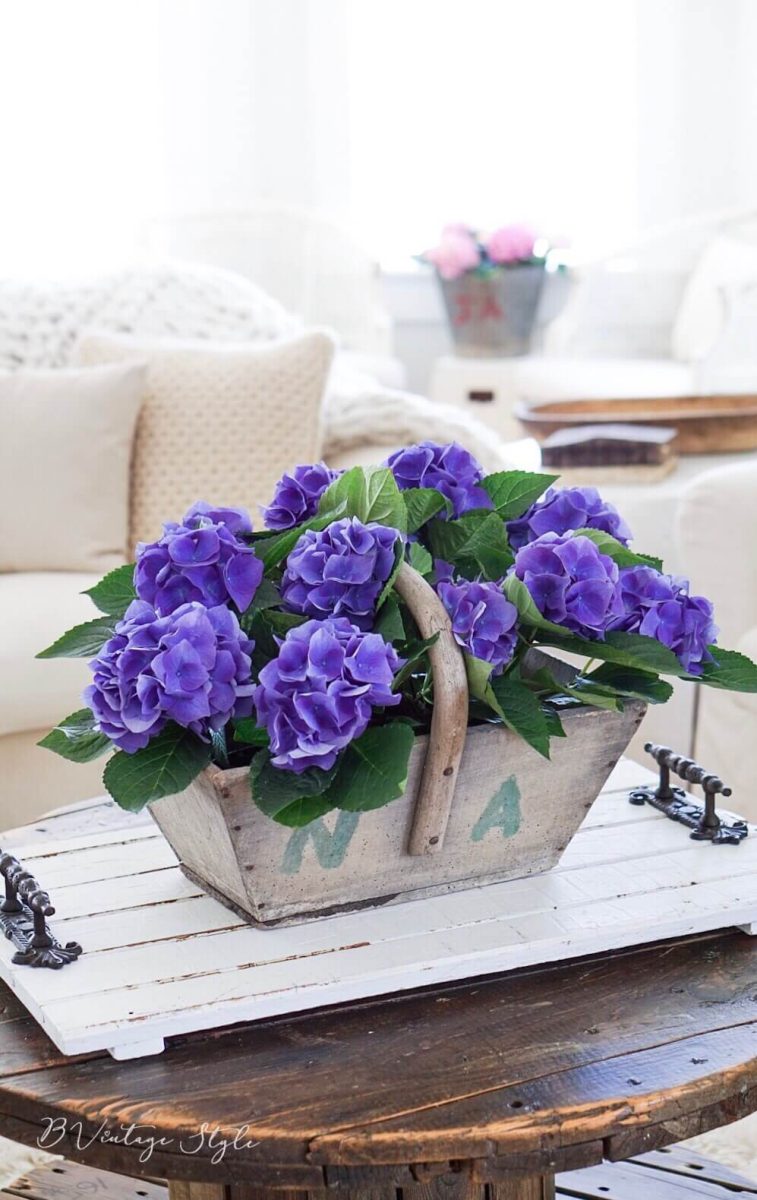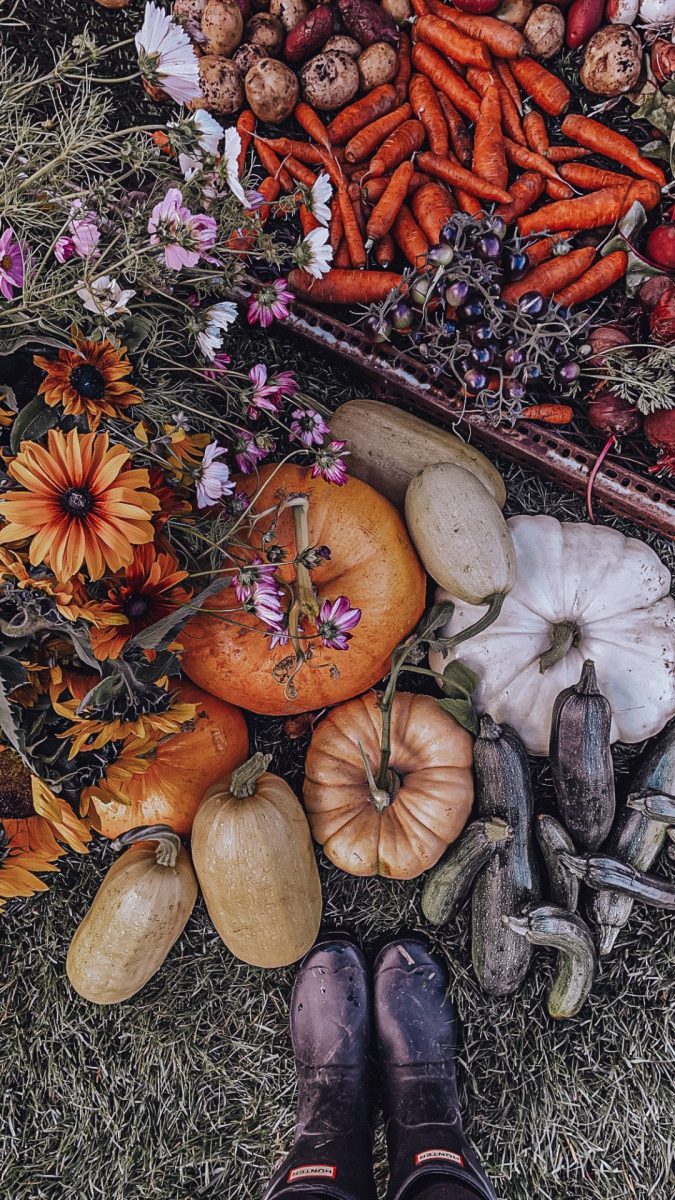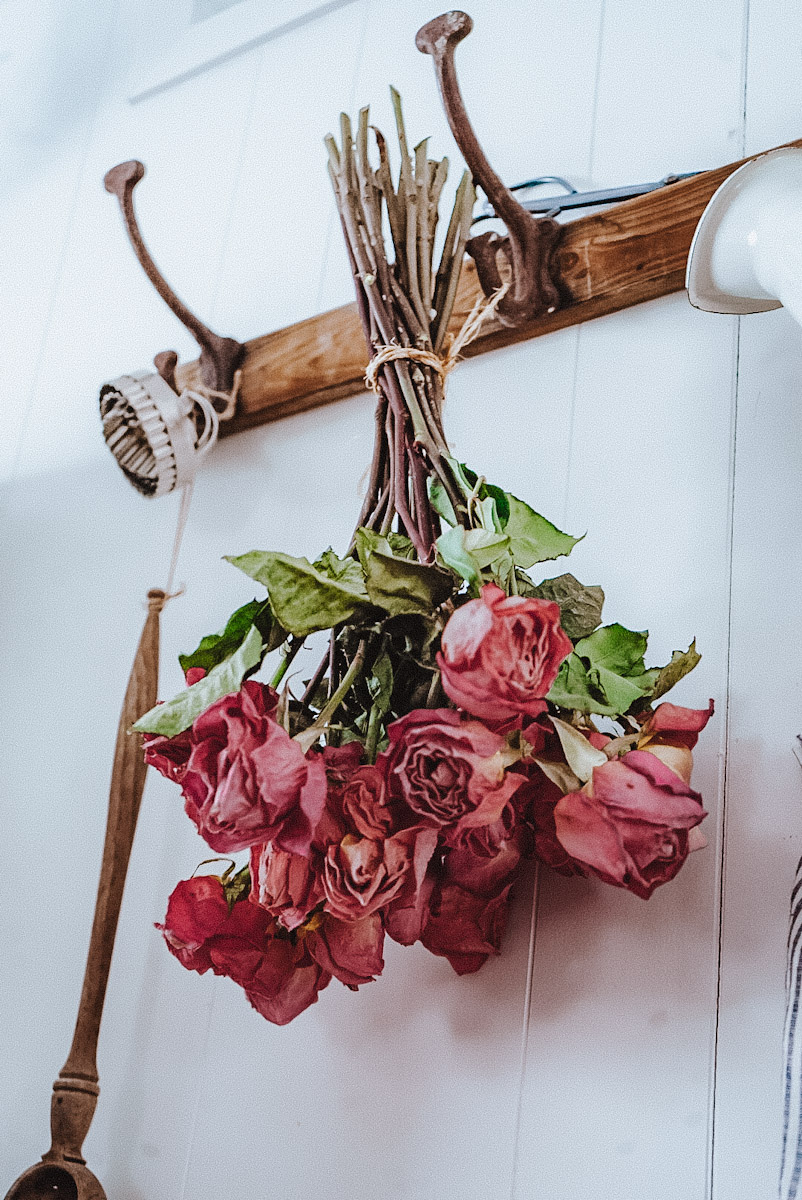This post may contain affiliate links. Please read our full Disclosure Policy.
Are interested in starting a vegetable garden and want the easiest vegetables to grow but don’t know where to begin? Growing your own vegetables can be a rewarding and cost-effective way to provide fresh produce for yourself and your family. However, if you’re new to vegetable gardening, it can be overwhelming to figure out which vegetables to grow. Fortunately, there are many easy-to-grow vegetables that are perfect for beginners.
The simple act of planting a seed, caring for it and producing healthy food is not only satisfying but is also cost-effective and gets you up close to nature. This beginner guide is perfect for new gardeners and will go over some of the easiest and best vegetables to grow, no matter where you live or what growing zone you are in.
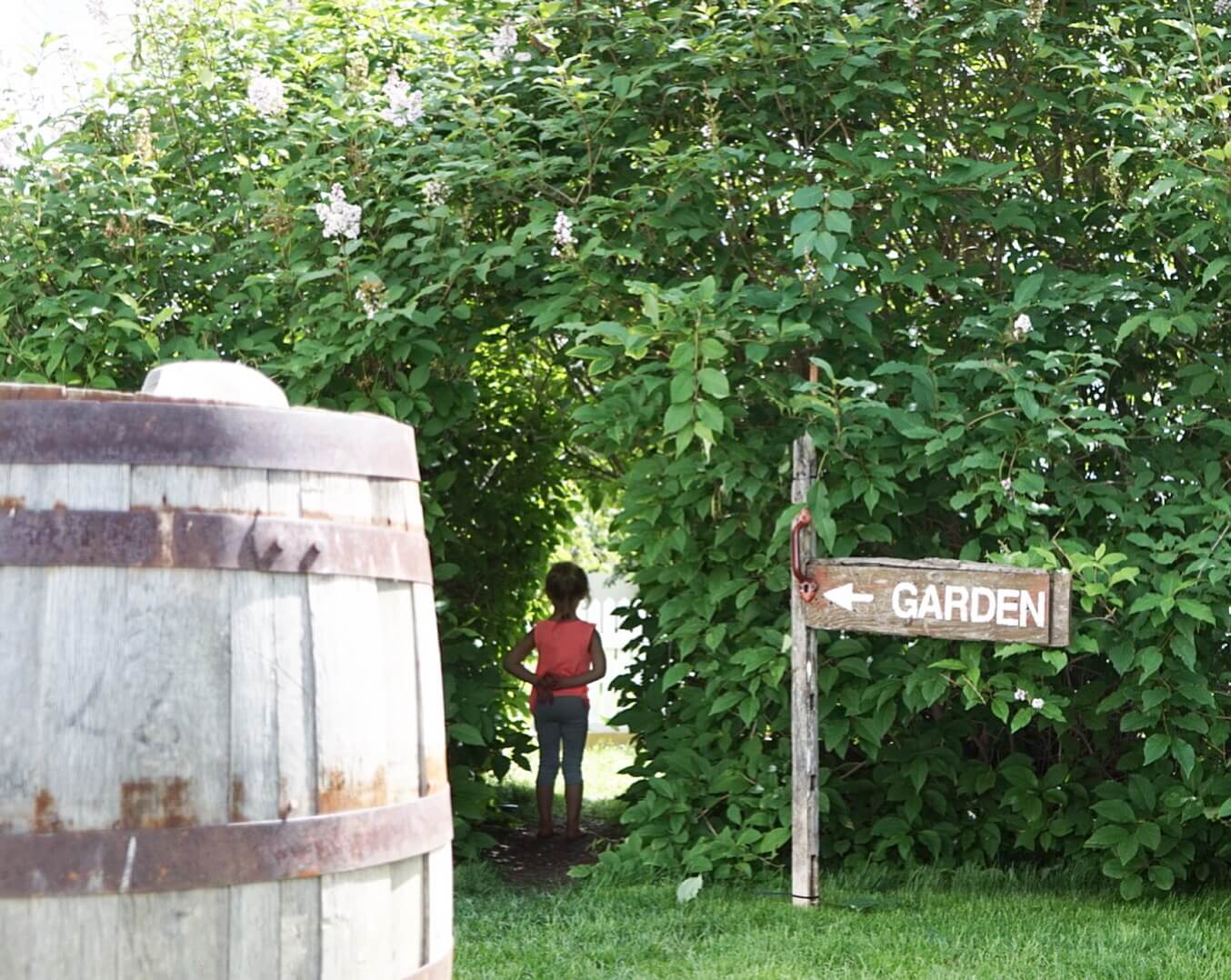
Prepping To Grow Vegetables
If you are a first-time gardener, it is a good thing to do a bit of research and planning prior to choosing which vegetables to grow. Testing your garden soil, choosing a location with direct sunlight and investing in proper fertilizers or organic matter will all help to achieve the best results as beginner gardeners.
Take a few minutes to read my full guide on starting a garden before going any further with deciding on what fresh vegetables to put in it. Be sure to also print off the Gardener’s supply checklist and garden layout pdf.
A Beginner’s Guide : Easy Vegetables To Grow
Leafy greens like lettuce and spinach are among the easiest vegetables to grow. They don’t require a lot of space or special care, and they can be harvested multiple times throughout the growing season. Root vegetables like radishes and carrots are also great choices for beginners. These vegetables are hardy and quick to mature, making them ideal for those who are new to gardening.
Whether you have a large backyard or just a small balcony, there are plenty of vegetables that you can grow at home. Let’s take a closer look at a list of the easiest vegetables to grow for beginners.

Container Gardening Vegetables
Container gardening is a great way to grow vegetables, especially for those who have limited small space or access to a garden. It’s also a great option for beginners who are just starting out with gardening. Here are a few veggies that are great to get started:
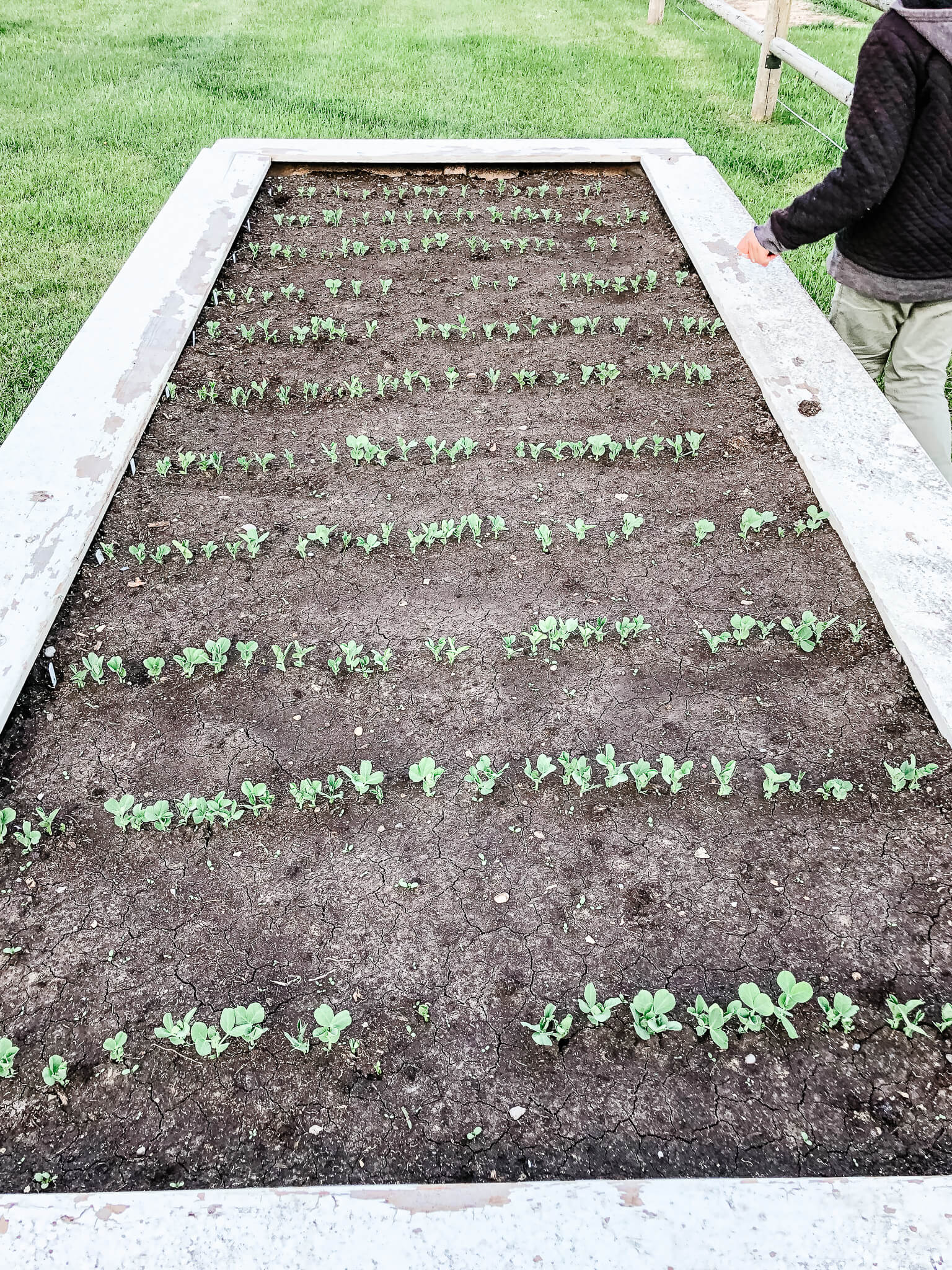
Tomatoes
Tomatoes are one of the most popular vegetables to grow in containers. They require a large container, at least 10 gallons, and need to be watered regularly. A self-watering container or oya can help ensure consistent watering. It’s best to plant one tomato plant per container and add a trellis for support when planting.
Some great variations of tomato plants are cherry tomatoes, beef steak tomatoes, Roma tomatoes and plum tomatoes. If you love to cook with tomatoes, be sure to try these yummy fire-roasted tomatoes or smoky tomato soup.
Peppers
Peppers are another great vegetable to grow in containers. They require a container that is at least 5 gallons in size and need to be planted in well-draining soil. Peppers also need to be watered regularly and require full sun exposure. It’s best to plant one pepper plant per container.
Both bell peppers and hot peppers will do well in a home garden.
Green Beans or Pole Beans
Green beans are one of the easiest vegetables to grow in containers. They can be grown in either bush or pole varieties and require a container that is at least 6 inches deep. Green beans need to be planted in well-draining soil and require regular watering. It’s best to plant multiple green bean plants per container.

Container gardening is a great way to grow vegetables, even if you don’t have a lot of space. With a little bit of planning and care, you can enjoy fresh, homegrown vegetables right from your own container garden. You can also check out the best tips on how to plant flowers in pots too.
Raised Bed Gardening
Lettuce
Lettuce is one of the easiest vegetables to grow in a raised bed. It grows quickly and can be harvested multiple times throughout the growing season. Lettuce prefers cooler temperatures, so it’s best to plant it in the spring or fall. It’s important to keep the soil consistently moist to prevent the lettuce from getting bitter. You can also grow different varieties of lettuce in the same raised bed to add variety to your salads.
All different types of lettuce can be started from seed and thrive. Romaine, Butter crunch, Brentwood, mixed greens, Arugula or Rocket lettuce (one of my favs) are all great to mix into your garden.
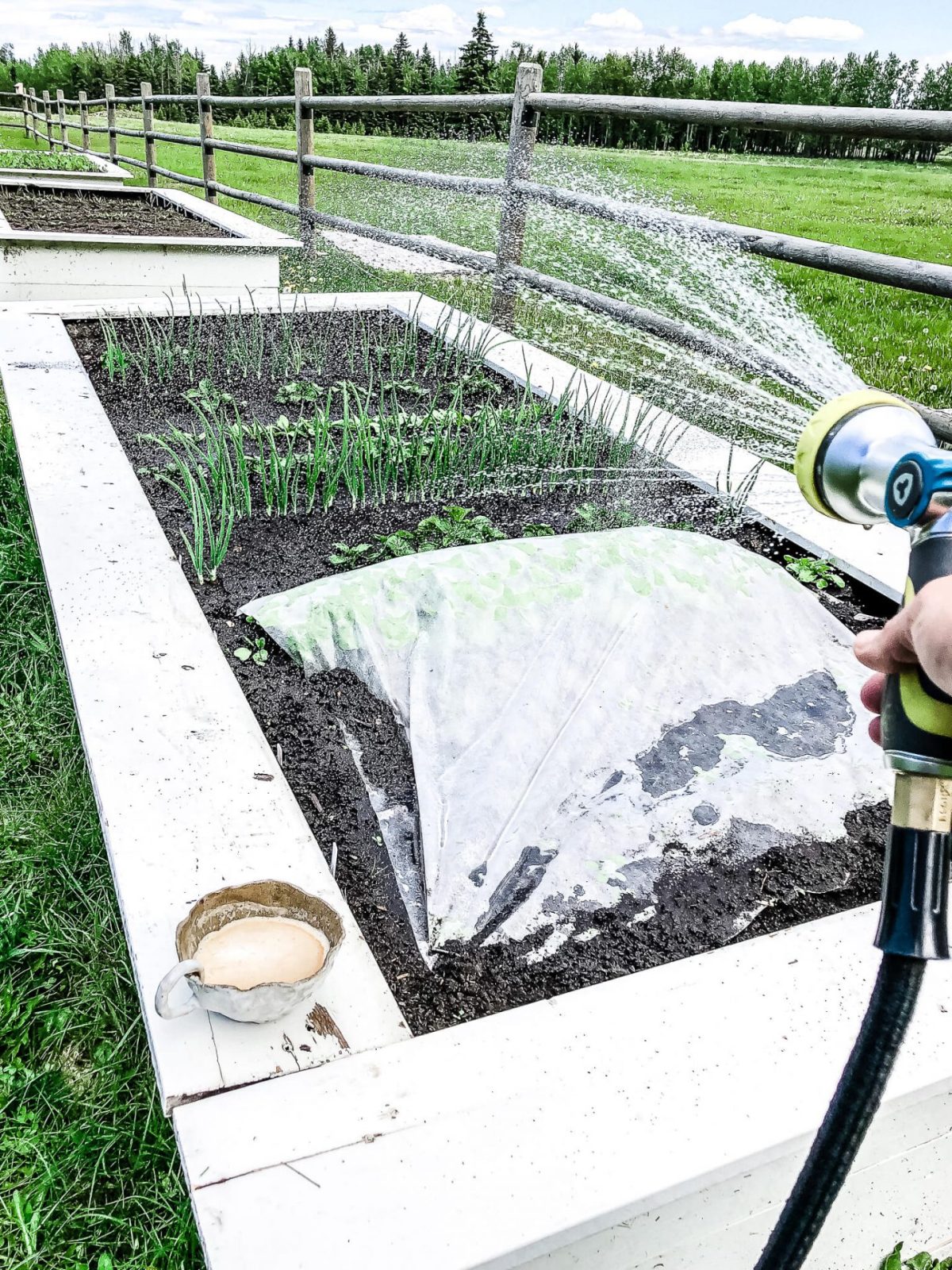
Radishes
Radishes are a fast growing and easy vegetable to grow in a raised bed. They prefer cooler temperatures and consistent moisture, so make sure to keep the soil moist. Radishes also prefer loose soil, so it’s important to remove any rocks or debris before planting. They mature in just a few weeks and can be planted in the early spring or late summer.
Radishes need to be pulled from the garden within about a week of becoming full size as they become wormy and woody (course texture) quite fast. For this reason, we like to plant radishes beside plants that will become larger later in the season.
For example, peas and potatoes are slower to start, but get large later on so when the radishes are done it gives more room for these plants to grow. Keep this tip in mind when planning out your vegetable garden ideas!
If you love radishes and spinach you can replant and get a second feeding from them, however, they don’t do well in extreme heat.
Radishes add a nice crunch to salads and are a great addition to any vegetable garden.
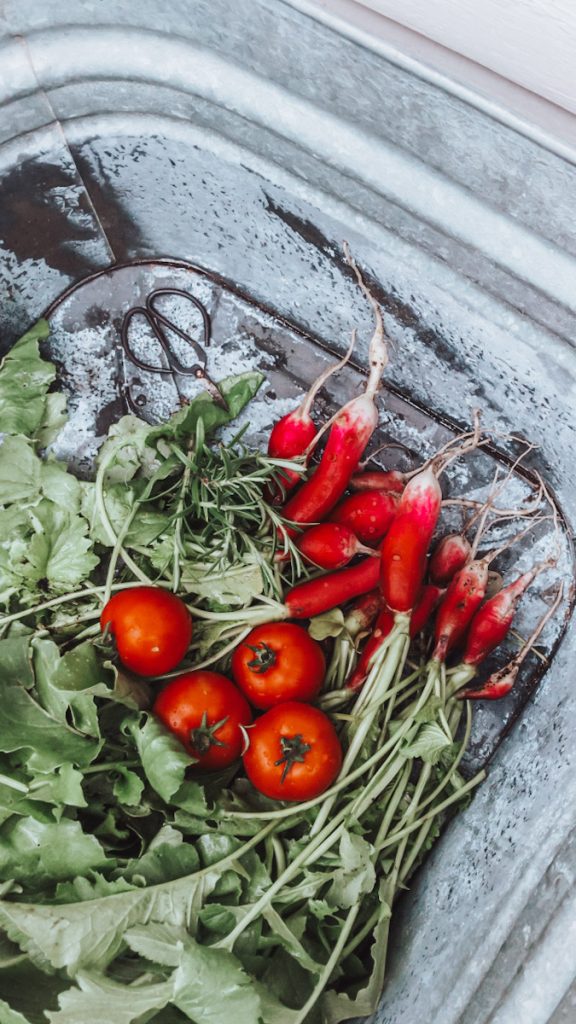
Radoccio
Like a radish, this root vegetable is a great addition to your garden and easy to grow. Unlike the radish, it takes time to grow and has a milder taste than the radish.
Peas
There are so many varieties of pea plants and they can produce such different results. The green arrow pea plant is a great option as it produces long pods with sweeter peas.
Edible peas, such as snap peas, are also delicious. Snap peas are also a tasty and easy variation for the summer season. You can eat the entire shell of this pea so it makes it a fun variety to have for a quick snack.
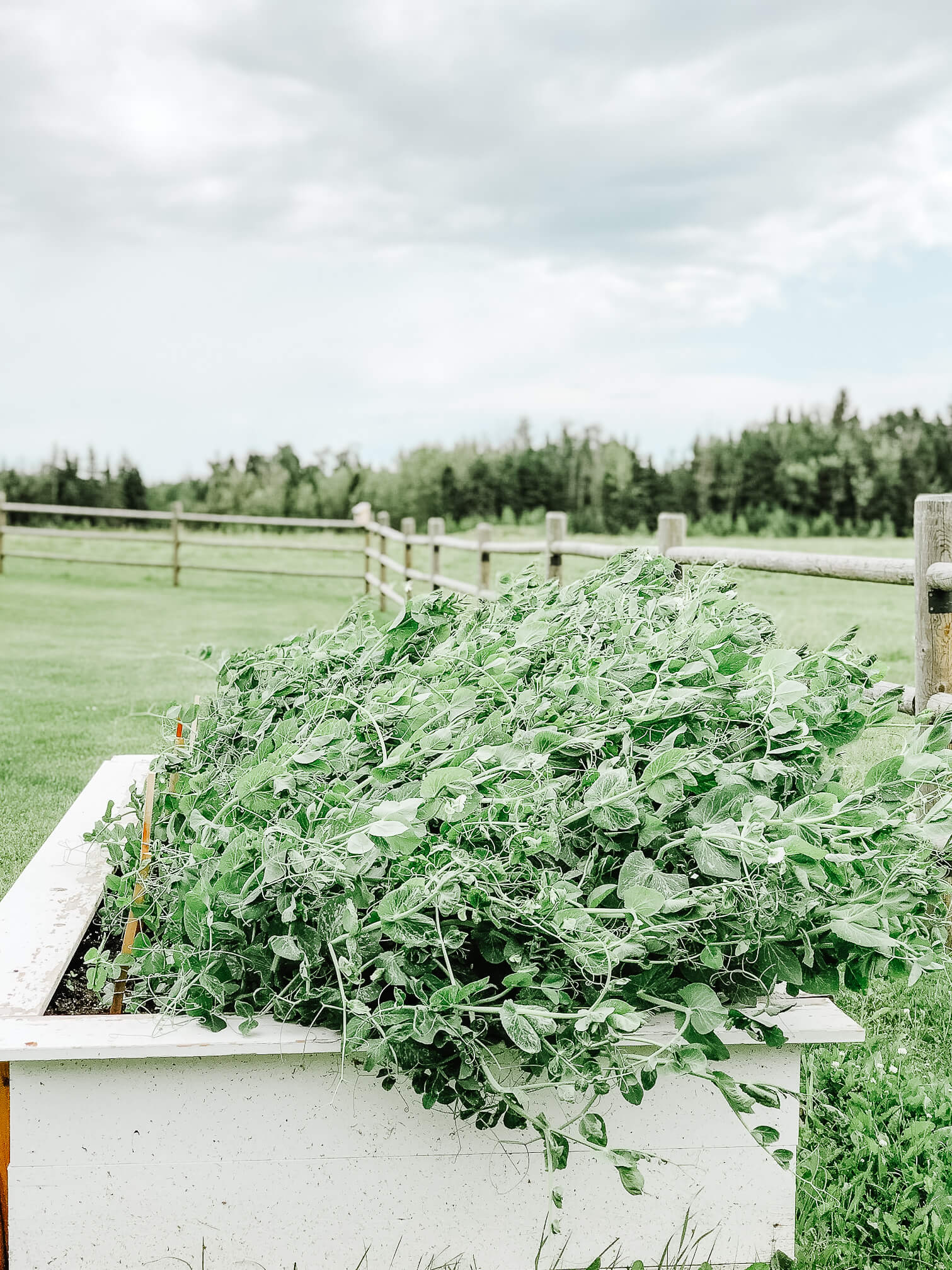
Learn how to build your own raised garden beds.
Swiss Chard
Swiss Chard prefers rich, well-drained soil in full sun or light shade which makes it perfect for container gardening, although it does just fine in the ground too. Plant this colourful plant seed in early spring to midsummer for a fall crop. Harvest and sauté in truffle oil or butter for a quick summer green.
Direct Seeding
Carrots
You can never have enough carrots! They are low-maintenance and can be planted in the early spring or late summer. Start these from seed and you will have a bountiful garden. Carrots are another easy vegetable to grow in a raised bed too however, Carrots like cooler temperature and the soil in the garden boxes get way hotter than in a garden on the ground.
Carrots prefer loose soil, so it’s important to remove any rocks or debris before planting. They also need consistent moisture, so make sure to water them regularly.
Carrots can take a while to mature, so be patient and wait until they are fully grown before harvesting. Let them grow into the fall and they can store in the fridge, cold room or cover with sand for MONTHS!

There are so many variations of carrots nowadays, I like to plant a few different colours of carrots to make for fun salads or roasted veggies at the end of the harvest. You can also mix radish seeds with carrot seeds when you plant to reduce the amount of thinning needed for carrots. The radish with mature faster than the carrots and as you pull the radish you will give ample room for your carrots to grow.
Pickled carrots are a family fav around here! If your wanting a great recipe try my Crunchy Homemade Pickled Carrots
Cucumbers
Cucumbers are easy to grow from seed and can be directly sown in the garden. They prefer warm soil, so wait until after the last frost before sowing the seeds. Plant the seeds 1 inch deep and 6 inches apart. Keep the soil moist until the seeds germinate, which should take about 7-10 days. Once the plants have grown a few inches, thin them to 12 inches apart so they have enough space to grow.
Zucchini
Zucchini is easy to grow straight from seeds or starting early in small pots in the spring. This plant needs room to grow so you need to give it space! When planting Zucchini, you want to make sure it gets enough water for the first 7-10 days and a warmer growing season will really help as well.
They can be directly sown in the garden, but wait until the soil has warmed up to at least 60°F. Plant the seeds 1 inch deep and 3 feet apart. Keep the soil moist until the seeds germinate, which should take about 7-10 days. Once the plants have grown a few inches, thin them to 3-4 feet apart so they have enough space to grow.
Squash
Squash is a great vegetable to grow from seed and can be directly sown in the garden. They prefer warm soil, so wait until after the last frost before sowing the seeds. Plant the seeds 1 inch deep and 3-4 feet apart. Keep the soil moist until the seeds germinate, which should take about 7-10 days. Once the plants have grown a few inches, thin them to 3-4 feet apart so they have enough space to grow.
When direct seeding vegetables, it is important to keep the soil moist until the seeds germinate. Once the plants have grown a few inches, thin them out to provide enough space for them to grow. Direct seeding is a great way to grow vegetables and can be very rewarding.
Pumpkins
Pumpkins need to be given a head start indoors in our climate. We will start them in late March or early April and transplant them into a sunny spot when the ground warms up and the frost stops. A few of the variations we love to grow that are a bit different than your standard orange pumpkin are:
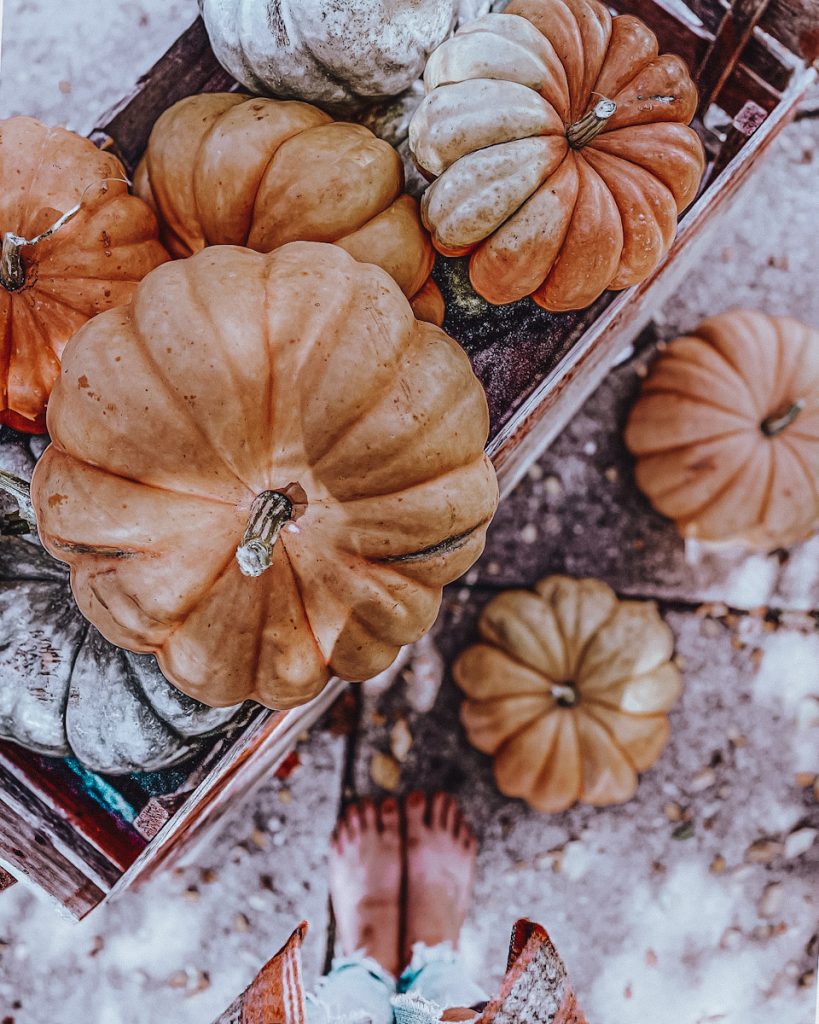
- Sugar Pumpkin
- Blue Jarrahdale
- Baby Boo
- Fairytale (best tasting and for cooking of the bunch)
- French Cinderella
- Indian Doll
Pumpkins are amazing to cook with as well. Check out a couple of fav pumpkin recipes HERE.
Potatoes
Potatoes are one of the easiest vegetables to grow! They do well in almost any growing zone and love rich soil. When potato plants get approximately 8-10 inches tall they must be “hilled.” Mount the dirt up around the plant as this is where the potatoes will grow. Potatoes hardly grow down so they require this dirt to produce
White Potatoes are good for keeping to grow and use as baked potatoes in the fall. Red potatoes are sweeter and more tender.
I have also grown Vitelotte potatoes in the past that I was given by my neighbour from France. I keep a few potatoes each season as seeds for the next year. This variation is very yummy and easy to cook with. Sometimes it’s fun to try new variations like this.
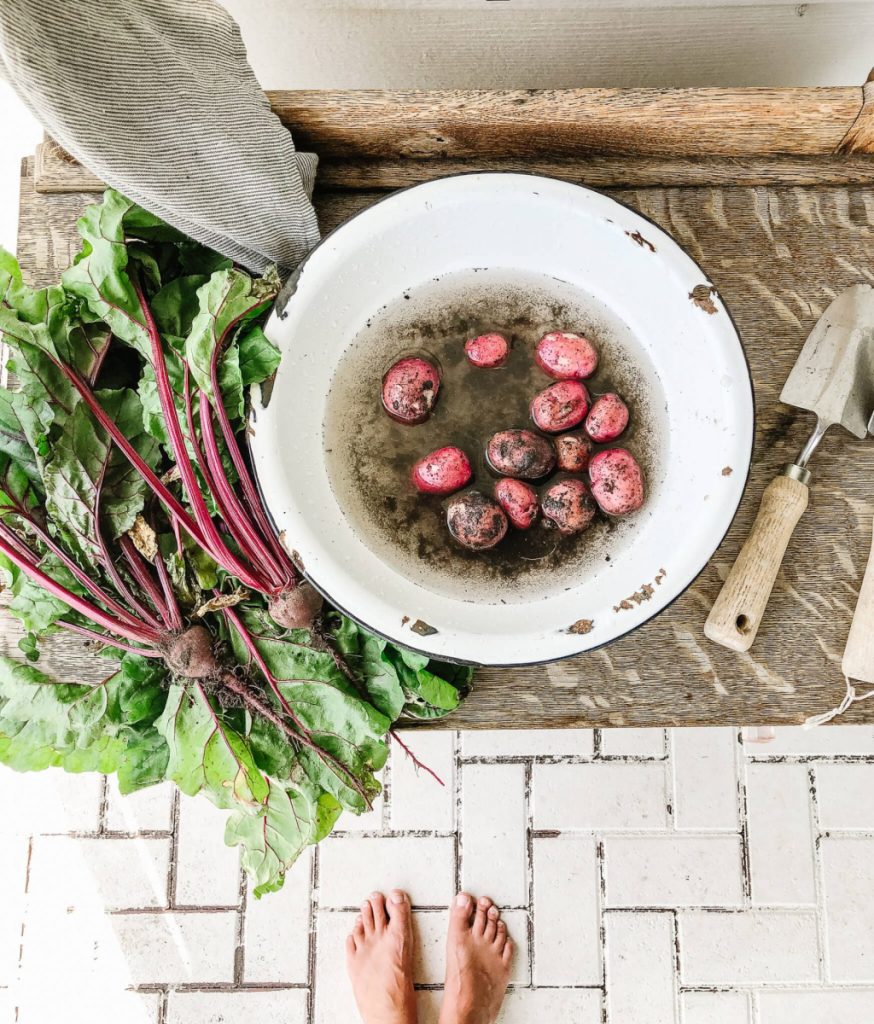
Robbing Potatoes??? After your potato plant has flowered (usually light purple or white flowers will bloom on the plant) you may find a few potatoes to rob. Gently use your hand to dig around the plant and feel for small potatoes and pluck them out. You will not hurt the plant by doing this. However, if you feel a potato and you rip it from its root then you must pull it as it won’t continue to grow once this happens…so just enjoy eating it! If you are gentle you can feel around for the bigger potatoes and pull those ones.
Broccoli and Brussel Sprouts
These varieties of vegetables are becoming hardier allowing us to grow them! Both require a lot of sun and warmth however they can easily become wormy or full of Cabbage White Butterfly that eat the leaves.
Beets
Beets are a great root vegetable garden idea to add. You can eat the greens of beets early on before they become tough. Have you ever grilled beets? Baste them in extra virgin olive oil and seasoning and then put them on the BBQ until slightly tender and so sweet!
Shop Vegetable Seeds And Supplies
Check out all my favorite garden tools and vegetable seeds in my online shop and Amazon Shop.
I think it’s important to state that not everyone has a so called ‘Green Thumb’ and that you shouldn’t be too hard on yourself if you are just starting your gardening journey! There are some seasons when my garden flourishes and others that aren’t so great! That’s all part of it, especially if you are in a growing zone that isn’t exactly perfect! Just have fun with your garden, enjoy the little wins and try the fails over!
I hope this run down on easy vegetables to grow ideas gives you a good idea of what to plant this year. Ordering your seeds in the early spring is the perfect time of the year to get them here in time to start them indoors for the season. I would love to hear about your favourite vegetables and varieties that you plant in the garden each year. Leave a comment below or send me an email!
Happy Planting!
Now that you’ve got your veggies all figured out, it’s time to plant your flower garden! Try these 11 early spring flowers!
More From The Garden
Frequently Asked
Arugula, radishes, and spinach are some of the fastest-growing vegetables that come up early in the season and can be harvested in as little as 30 days after planting. Other vegetables that are known for their fast growth include green onions, chives, and baby carrots.
If you’re new to gardening and looking to grow vegetables, there are several easy-to-grow vegetables that are perfect for beginners. Here are some good options:
Tomatoes: Tomatoes are one of the most popular vegetables to grow and are relatively easy to care for. They require regular watering and plenty of sunlight.
Lettuce: Lettuce is another easy-to-grow vegetable that can be grown in containers or in the ground. It grows quickly and can be harvested multiple times.
Peppers: Peppers are another popular choice for beginners. They come in a variety of colors and sizes and can be grown in containers or in the ground.
Radishes: Radishes are one of the quickest-growing vegetables and can be harvested in as little as 30 days. They are easy to grow and don’t require much space.
Green beans: Green beans are a great option for beginners as they are easy to grow and produce a high yield. They require regular watering and plenty of sunlight.
Zucchini: Zucchini is another easy-to-grow vegetable that produces a high yield. It requires regular watering and plenty of sunlight.
These are just a few examples of vegetables that are good for beginners. Ultimately, the best vegetables to grow will depend on your climate, soil conditions, and personal preferences.
My friend Hannah from We Lived Happily Ever has the most amazing pumpkin patch and you can read all about her best secrets here! Or if you are looking to create a little herb garden, check out Satoria design living herb garden ideas.






